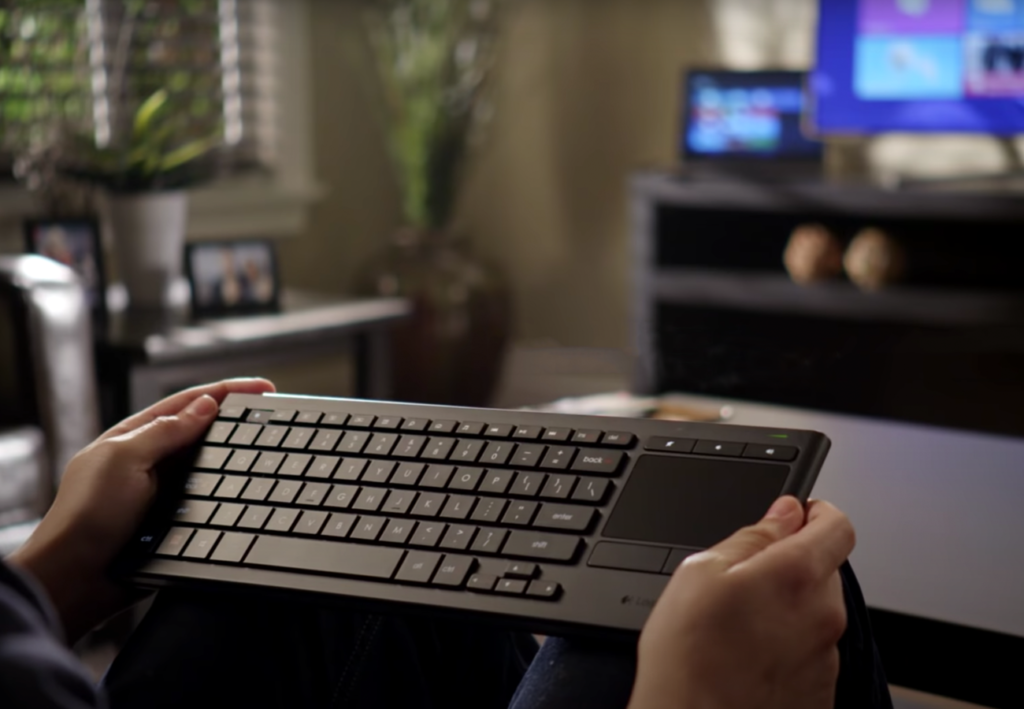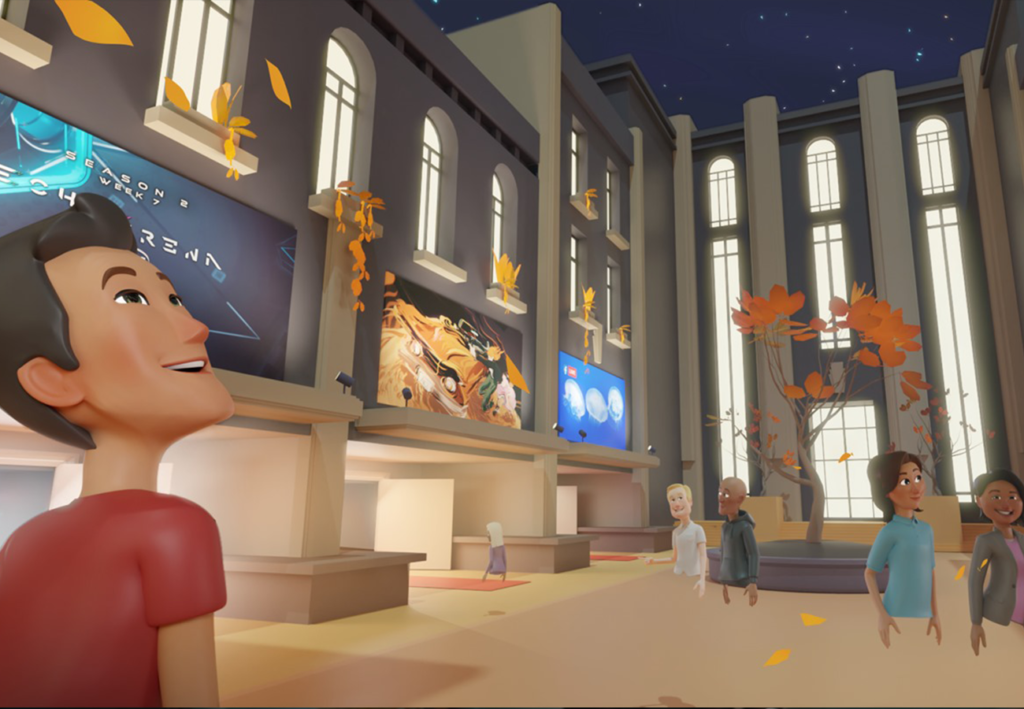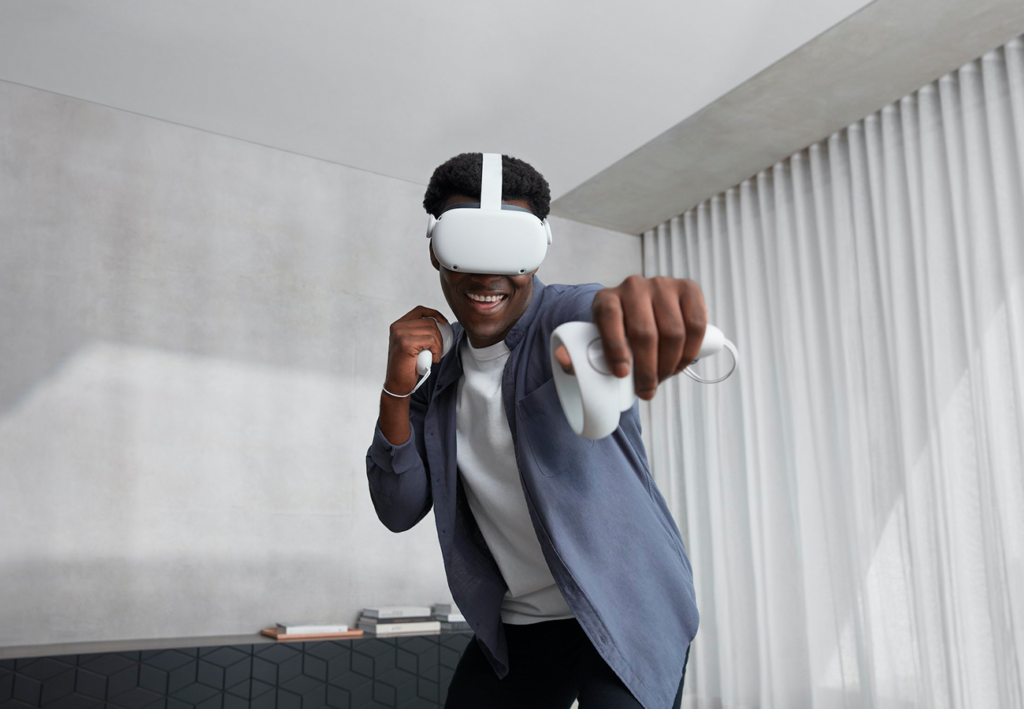Will the office of the future fit on the tip of our nose?

One of the main benefits coming out of the 2020 annus horribilis is technology’s impact on the future of office work. Remote working could just become the norm in sectors where it is feasible. In 2019, 22% of Belgian workers were already regularly working remotely (compared to 5% in the EU). These numbers will certainly rise drastically in the (very near) future. Giants of the web, with Facebook in the lead, seem confident that tomorrow’s office will be virtual.
Due to the pandemic, videoconferences have become commonplace not only at work but also at home. As of late 2020, business meetings as well as family drinks are taking place online. If Zoom and Houseparty can win over the general public, a new professional digital ecosystem is growing. Designed to provide organisations with the best of both worlds, virtual collaboration devices and software are proliferating.

Digitisation to the rescue of confined workers
The release of Facebook’s new VR headset, the Oculus Quest 2 (at the price of a mid-range smartphone, models ranging from €349 to €449), illustrates a rapidly growing trend: virtual reality, to date mainly devoted to entertainment, is steadily conquering the workplace.
As workers become increasingly confined, manufacturers and publishers quickly began developing effective devices and software to fill the ‘physical’ gaps of remote working. Unveiled during Facebook Connect 7, Infinite Office enables the creation of virtual workspaces on Oculus Quest 2. Since the device functions as an independent computer, you just have to turn it on to instantly arrive at the office, from the comfort of your home.
VR headsets soon to be obsolete: long live AR goggles
Facebook and Logitech jointly developed the K830, a keyboard-trackpad combo connected to the Oculus Quest 2. The keyboard and the user’s hands are located by the headset and appear in the virtual environment – no need to fumble around or try to blind type. The result is a super-smooth user experience – essential when it comes to professional applications.

Very soon, VR headsets will give way to augmented reality goggles. The Apple Watch 6 already detects the movements of our fingers, and the Airpods Pro those of our heads, with the iPhone using these data to compute and perform hi-def AR. And we’ll shortly be able to do without and physical interfaces completely, once AR goggles are released that surpass the current performance and ergonomics of the cumbersome Hololens and Magic Leap.
An abundance of professional VR applications
MeetinVR takes the virtual office a few steps further. Entirely dedicated to collaborative tools, it provides virtual rooms for different types of meetings (conversation, brainstorming, presentations, agile meetings, etc.) – set up and equipped accordingly. This total immersion offers numerous functionalities: whiteboards, screens, tablets, 3D mapping, stage and a giant screen for a keynote, etc.

The lack of human warmth also sparks (attempted) virtual responses. In Venues, users can participate in live events with colleagues, friends, or even strangers, to collaborate, network, attend a conference, sports events, or concerts — among many possibilities — in good company. Personalised avatars with vocal communication and freedom of movement in this virtual space encourage meetings and exchanges, just like with massively multiplayer online video games. Although it only partially compensates for the lack of social interactions and human warmth, Venues still allows us to share moments with friends and family to reduce the isolation and solitude caused by the virus.

Covid has boosted demand, but the technology supply was already there
In recent years, Apple, Facebook, Google, Microsoft and many others have been investing heavily in XR (aka extended reality, an umbrella term including VR, AR, and Mixed Reality/MR), a trend strongly reinforced by the pandemic. A new software and hardware ecosystem is thus developing: countless start-ups are competing with major publishers to offer ever more creative and innovative solutions to the challenges of the post-Covid era.
Technology is improving, and increasing demand caused by current circumstances is driving a new chapter of the Digital Transformation. Until things get back to ‘normal’, digital technologies help soften — albeit slightly — the pandemic’s heavy impact on all aspects of lives: private, familial, affective, social, cultural, etc. On the other hand, in the professional sphere, technology is, more than ever, making our lives easier: tomorrow’s office will probably fit on the tip of our nose.

– I’m at work, babe! This is the game’s final boss… I meant “the company’s big boss”.
Our recent blog posts
See all blogs-
How is AI’s synthetic data enhancing User Experience Research? Technology

-
Web3.AI Rising : How new technology can add value to your business

-
How generative AI helped us create an e-commerce app – with personalised content – in just 2 weeks Technology

-
Can you build a foodie app in 3 days using Generative AI? (Spoiler alert: yes!)

